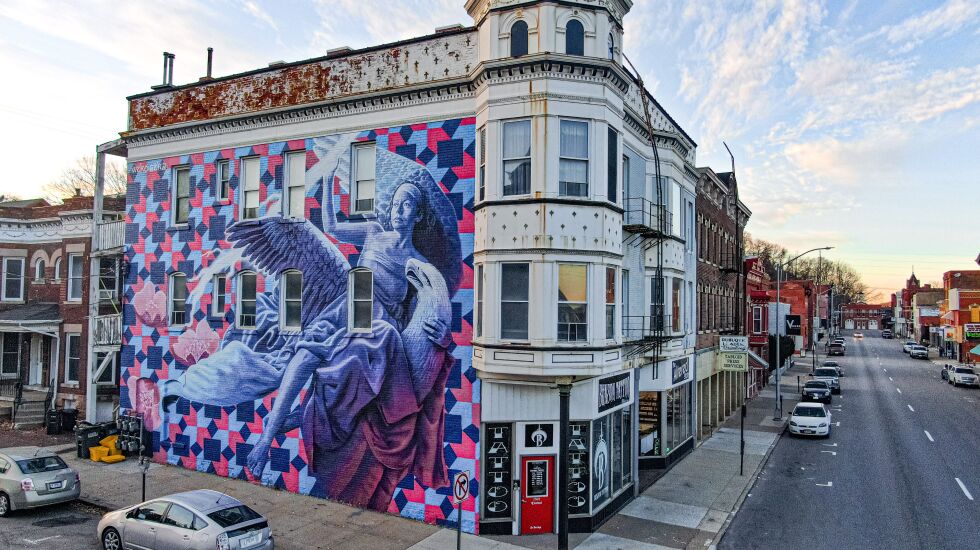
Dubuque, Iowa, has been called the “masterpiece on the Mississippi” for its natural beauty and proximity to the Mississippi River.
Now, the city of about 60,000 residents on the Illinois border is becoming known for a different kind of beauty — murals.
“It’s a river town with working-class roots, but we’re entering a new era, and it’s kind of interesting,” says Sam Mulgrew, whose Voices Productions nonprofit group has been a force behind the push for more public art. “The cultural life of Dubuque is taking on a new form.”
Dubuque has about 60 murals, according to Mulgrew, all done since 2015.
Some were painted to give a lift to an area, others to spur cultural tourism and help add to the vibe of a city aiming to attract and keep young residents.

The Brooklyn artist who goes by WERC has done several murals in Dubuque, including one titled “America Needs a Hug” created in 2018 with his partner in life and art, known as GERALUZ.
“It’s inspired by an old currency note,” according to WERC, and includes “a goddess who’s holding lightning, and she’s supported by an eagle.”
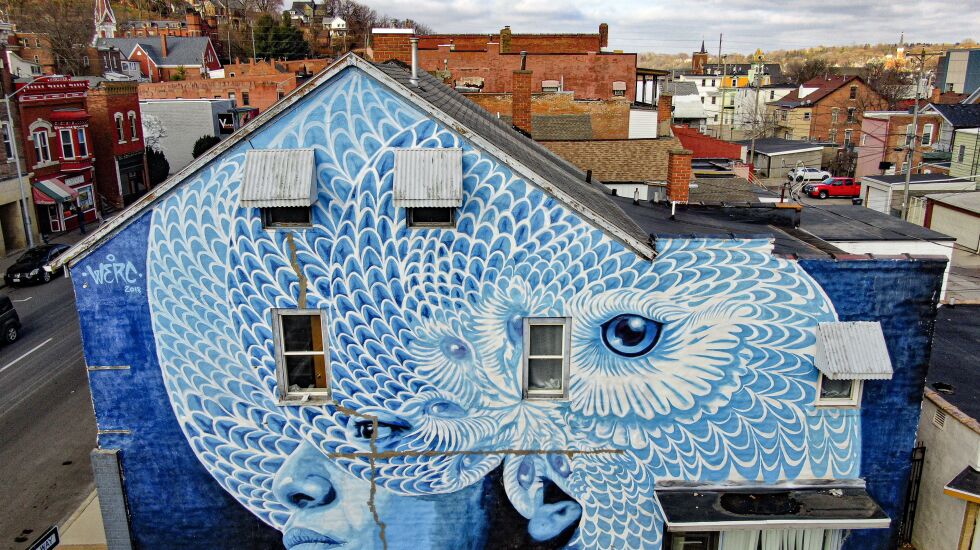
Across the street, WERC did another mural the same year, titled “Owl Moon,” touching on “femininity, wisdom, beauty” but which since was unexpectedly painted over.
Other murals in Dubuque have purposely been given a limited shelf life. Like one done in 2021 by the Connecticut artist who goes by ARCY that celebrates two baseball pioneers with ties to Dubuque and to the White Sox: Charles Comiskey and Red Faber.
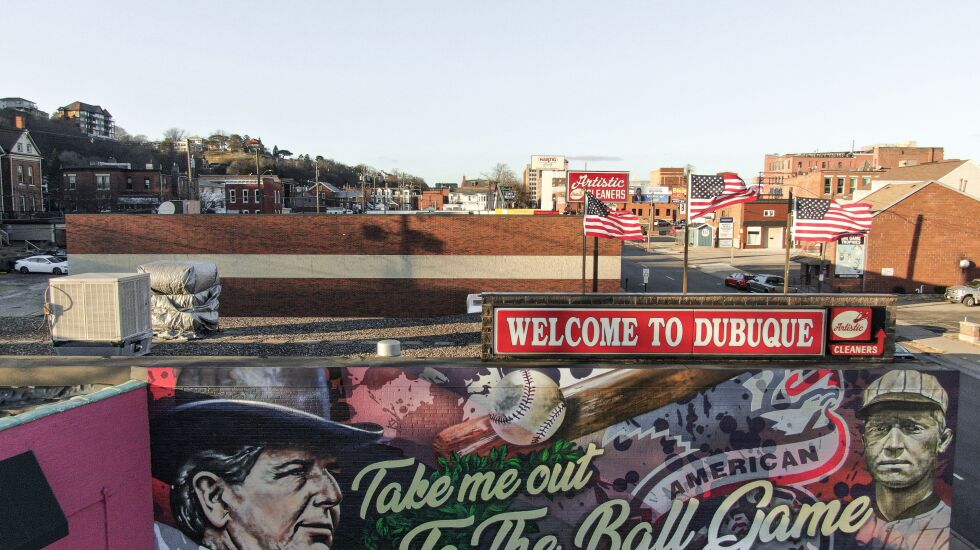
Comiskey, one of the founders of the American League, was a longtime owner of the Sox who once played for the Dubuque Rabbits minor-league team.
Faber was a Sox pitcher from 1914 to 1933 who played college and minor-league ball in Dubuque and was among the last pitchers allowed to throw a spitball, having been grandfathered in to keep using it when the pitch was banned.
Mulgrew says that mural was on a wall that’s meant to be repainted every year or two with new art, and it’s already been replaced.
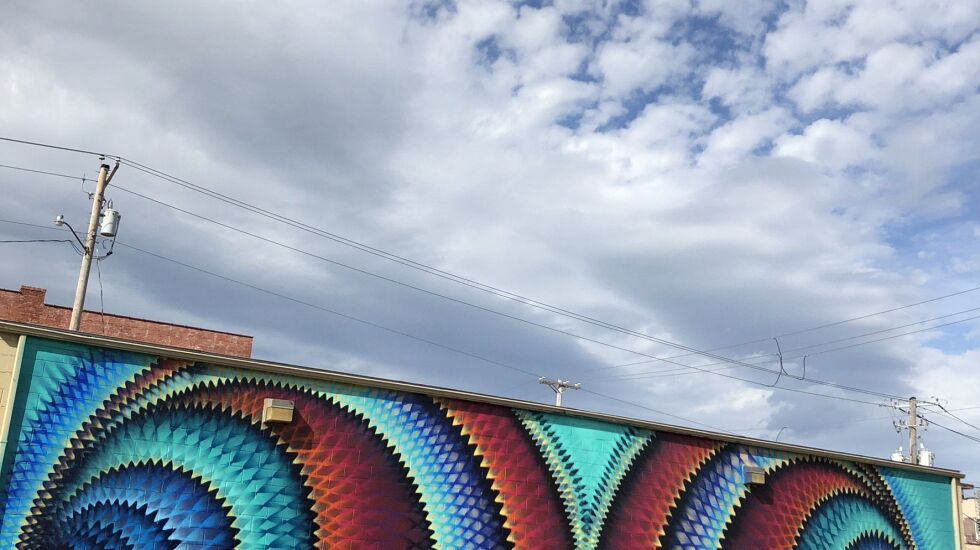
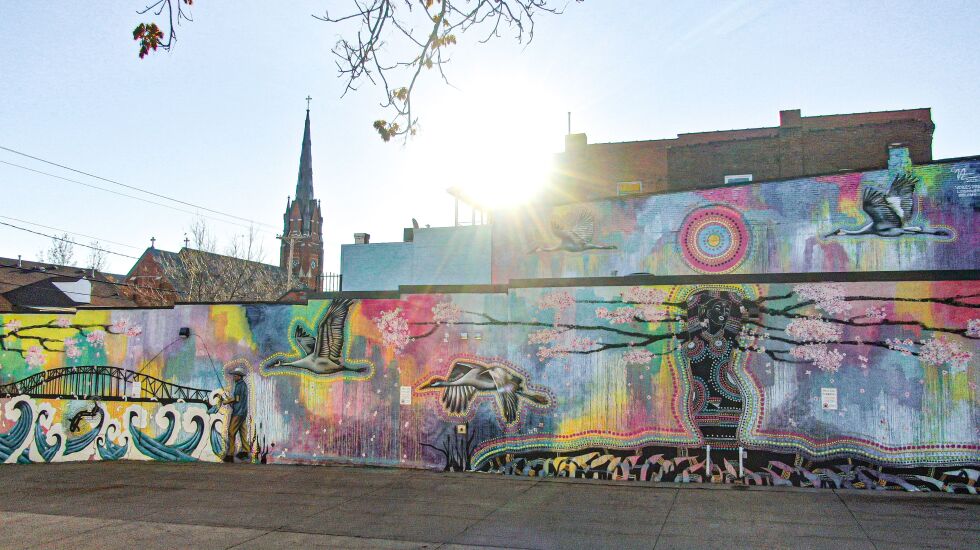
Mulgrew says his favorite painting in Dubuque might be one by the artist who goes by Gaia, featuring “a photograph we found of a group of men who were brewers in Dubuque” decades ago “holding a poster of their brewery.”
“It’s so many times removed from reality,” Mulgrew says. “Someone takes a photo of them, and we make a mural of it, like, 100 years later.”
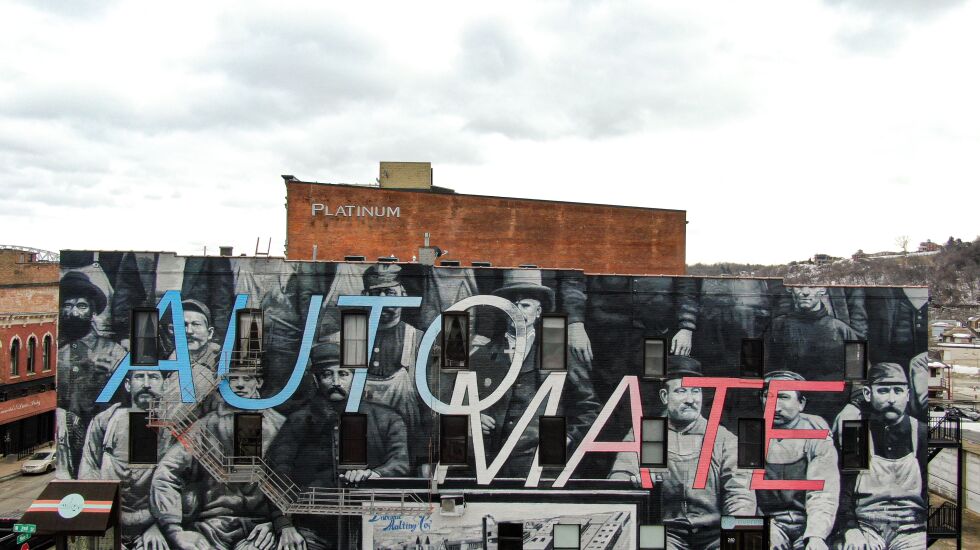
Gaia, who lives in Baltimore, says of his mural: “I wanted to propose the idea that the white working class, its biggest danger, its biggest threat, isn’t xenophobic, not immigrants taking jobs or globalization, it’s just automation.”
Asked about Dubuque’s explosion of murals, Gaia says, “I am intrigued by the strategy that ultimately a lot of small towns in the United States are utilizing, focusing on a younger demographic and exploring all kinds of different strategies for retaining young people.”
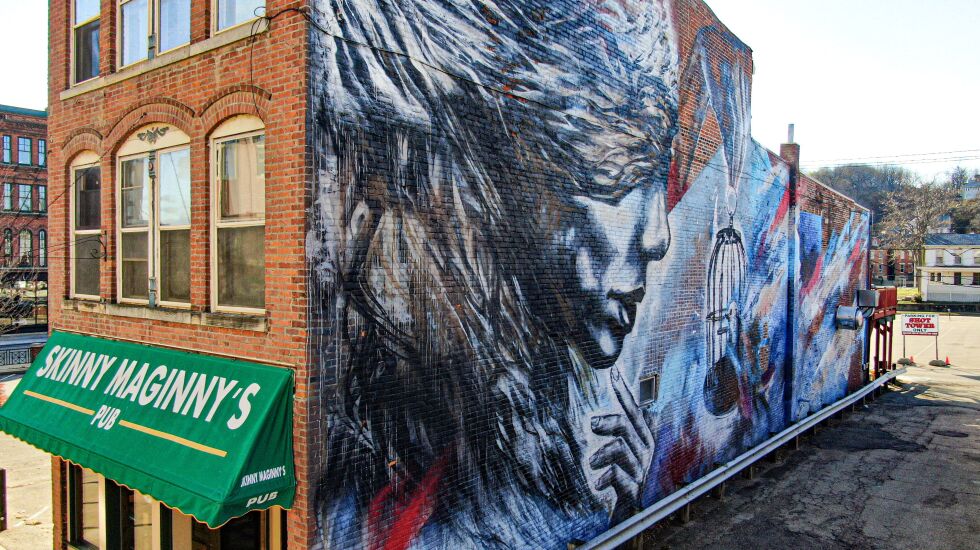
Street and graffiti art “are a facet of that strategy,” he says. “Ultimately, I think it works.”

Mulgrew says other small towns in the Midwest are “looking to Dubuque as a model for public art and mural art, for how to get it done.”







